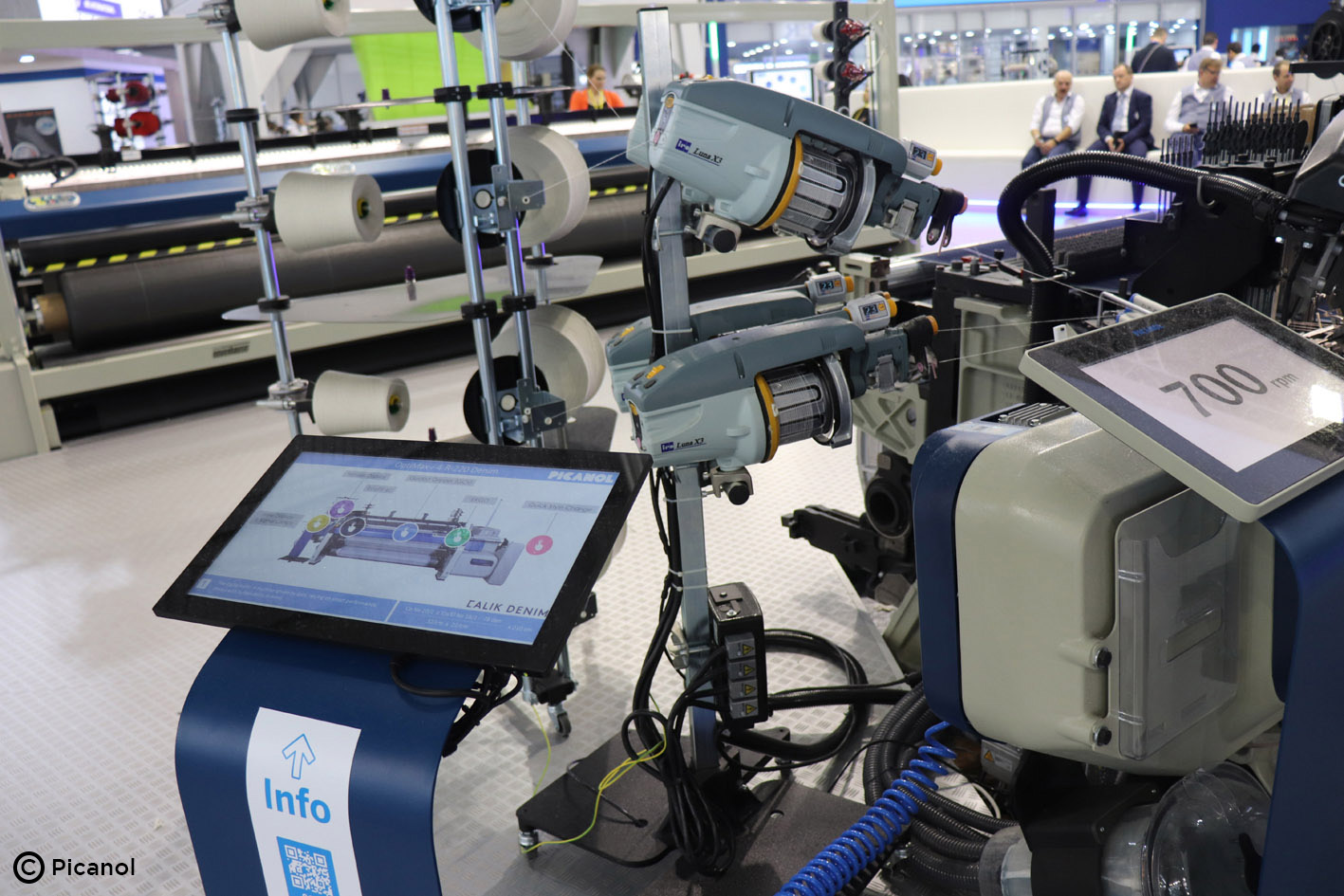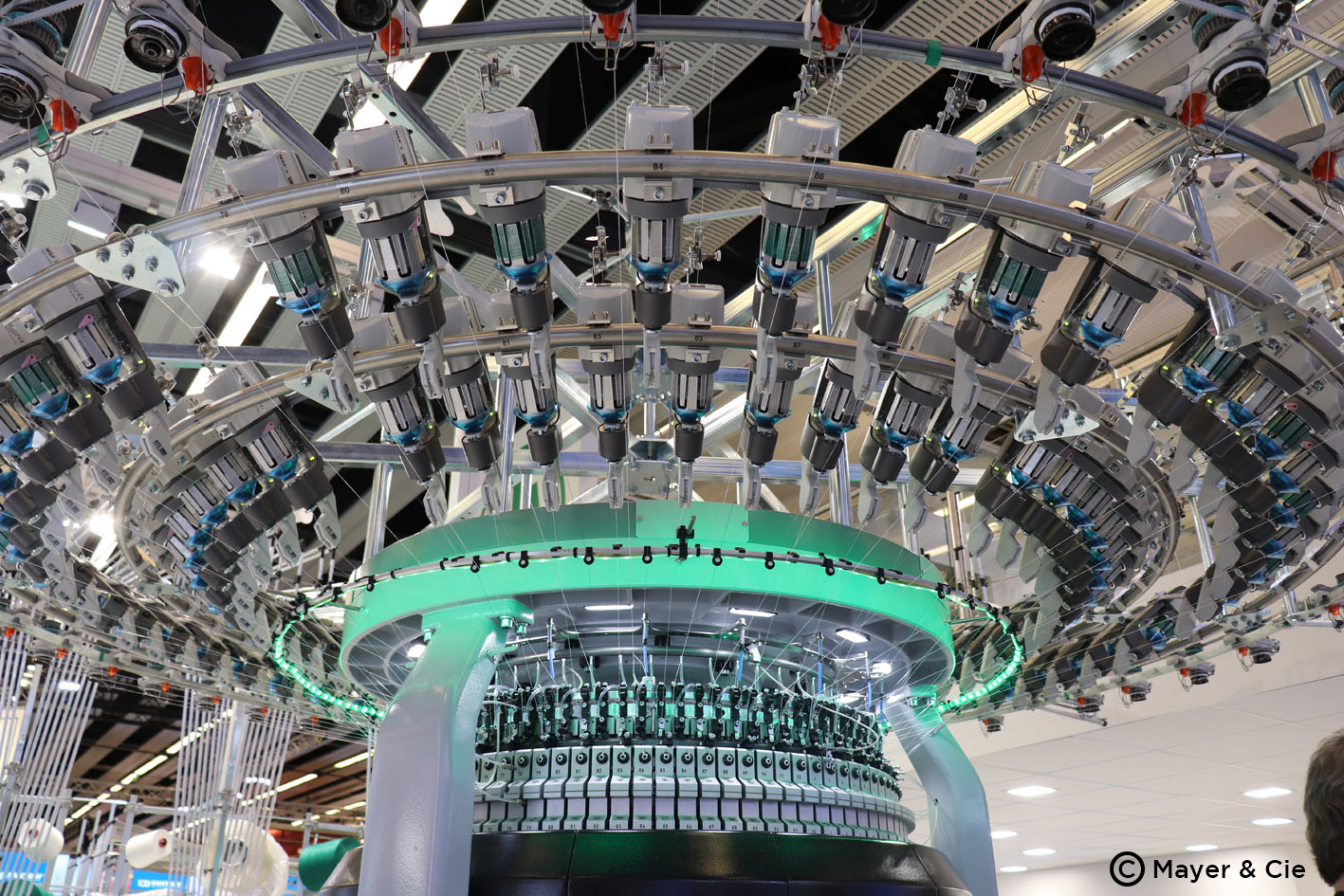28 - 31 October 2025 | Singapore Expo
Blog
Discover trending topics that are propelling the industry
The digital roots of weaving and knitting

While many exciting predictions are being made for what will be achieved through Artificial Intelligence (AI) in the coming years, there are also fears that it will make many skilled workers redundant. This, however, is nothing new.
It is 200 years since the invention of the Jacquard loom and there is a direct line connecting it to the digitalisation which is now transforming many processes and production technologies.
This includes the advanced machines for weaving and knitting that will be demonstrated at this year’s ITMA ASIA + CITME exhibition in Singapore.
Parallels
Introduced in Britain in the 1820s, the Jacquard loom immediately enabled basic labourers to create the same intricate products as skilled weavers for a fraction of the price, generating huge profits for mill owners.
And with notable parallels to what is happening today, many exciting predictions were being made for what could be achieved with the new technology, along with worries that it would make many skilled workers redundant.
The mechanisation of the UK’s textile industry back then led to the emergence of the infamous Luddite Movement and in a series of violent protests, mills were attacked and machines destroyed. The fears of the Luddites turned out to be justified to some extent, but at the same time, a new class of educated craftsmen and mechanists emerged.
Binary
Jacquard weaving involved the use of designs created on gridded paper which a newly-skilled worker then had to translate onto a ‘punch card’. Holes were punched into the card with each column and row corresponding to a specific square of the fabric design. These cards were then stitched together into a continuous belt and fed into the loom. By inserting the punch cards, an operator could control the motion of the multitude of threaded rods in the loom, allowing for complex patterns to be created with extraordinary precision and speed.
In both weaving and knitting, yarn interactions can be thought of in binary terms – just like 0s and 1s in computing. It’s no accident that Jacquard’s punch cards inspired Charles Babbage to use similar devices in his Analytical Engine – one of the first mechanical computers.
IoT connectivity
Fast forward 200 years, and industrial weaving and knitting machines are reaching the next level of performance through the integration of digital technologies.
Computerised control systems and IoT (Internet of Things) connectivity have become standard features in modern machines, allowing for real-time monitoring, predictive maintenance and remote diagnostics. These significantly reduce downtime and optimise performance, while digital control is also enabling greater design flexibility and rapid changes in patterns and structures without mechanical adjustments.
Automation is also dramatically changing how industrial knitting and weaving systems operate – from automated yarn feeding and tension control to robotic arms handling fabric rolls and maintenance tasks. Advanced tension control and auto-correction systems now ensure defect-free fabrics with minimal intervention.
In weaving, automatic warp-tying and shedding mechanisms have evolved, increasing changeover speed and operational reliability and similarly, knitting machines now often feature automatic needle selection and advanced loop formation control for precision at high speeds.
Machine speeds
Speed has always been a priority, and knitting machines have reached new levels of productivity, with finer gauge capabilities allowing for intricate and lightweight fabrics.

The circular knitting machines developed by leading brands such as Mayer & Cie (Germany), Pailung (Taiwan) and Santoni (Italy) now operate at speeds of between 60-80 rpm with an output of over 30 metres per hour, depending on gauge and fabric type.
Flatbed knitting machines for 3D knitting, seamless garments and shaped components have been pioneered by Shima Seiki (Japan) with carriage speeds of up to 1.6 metres per second which translates to high stitch rates depending on the gauge.
Warp knitting is the fastest form of knitting and comparable to or faster than air-jet weaving when measured by fabric output per minute. The leading technology provider of high-speed tricot and raschel machines here is Karl Mayer (Germany). The company’s HKS 3-M tricot machine operates at speeds of up to 4,000 rpm and 3,000 stitches per minute per guide bar.
Air jet looms meanwhile now operate at up to 2,000 ppm (picks per minute), depending on fabric and yarn type, with typical working speeds for lightweight to medium fabrics such as shirting, sheeting, and denim, of between 1,200–1,800 ppm. The leading air-jet machines include the JAT810 from Toyota (Japan) the ZAX-e Series of Tsudakoma (Japan), the A900 Series of Itema (Italy) and the OmniPlus-i Connect of Picanol (Belgium).
Adaptability
What will also be very evident at ITMA ASIA + CITME, Singapore is that all machines are now increasingly being designed to minimise waste and energy consumption through developments in lubrication system and energy-efficient motors.
The demand for fast fashion and bespoke technical textiles has also encouraged manufacturers to create more agile and adaptable machinery. Digital jacquard weaving and electronic patterning in knitting allow for mass customisation with minimal setup time.
Smaller batch sizes, rapid prototyping and quicker market responsiveness are now possible thanks to enhanced software interfaces and modular machinery configurations.
Since the 1820s, there has been no stopping the forward motion of the textile machinery industry, driven from the very start, by digitalisation.


















